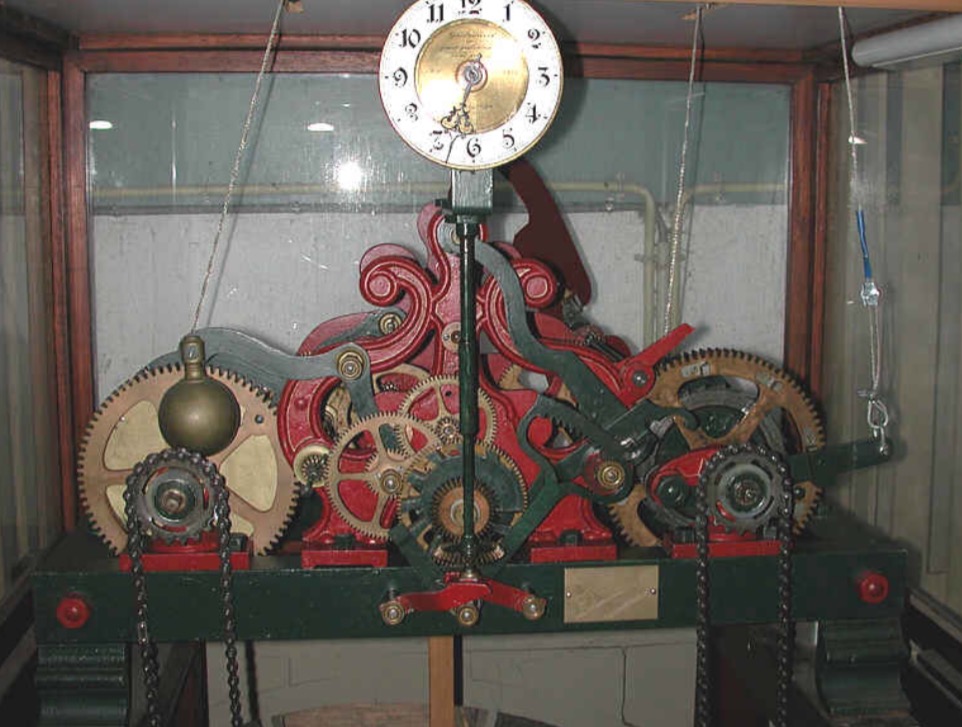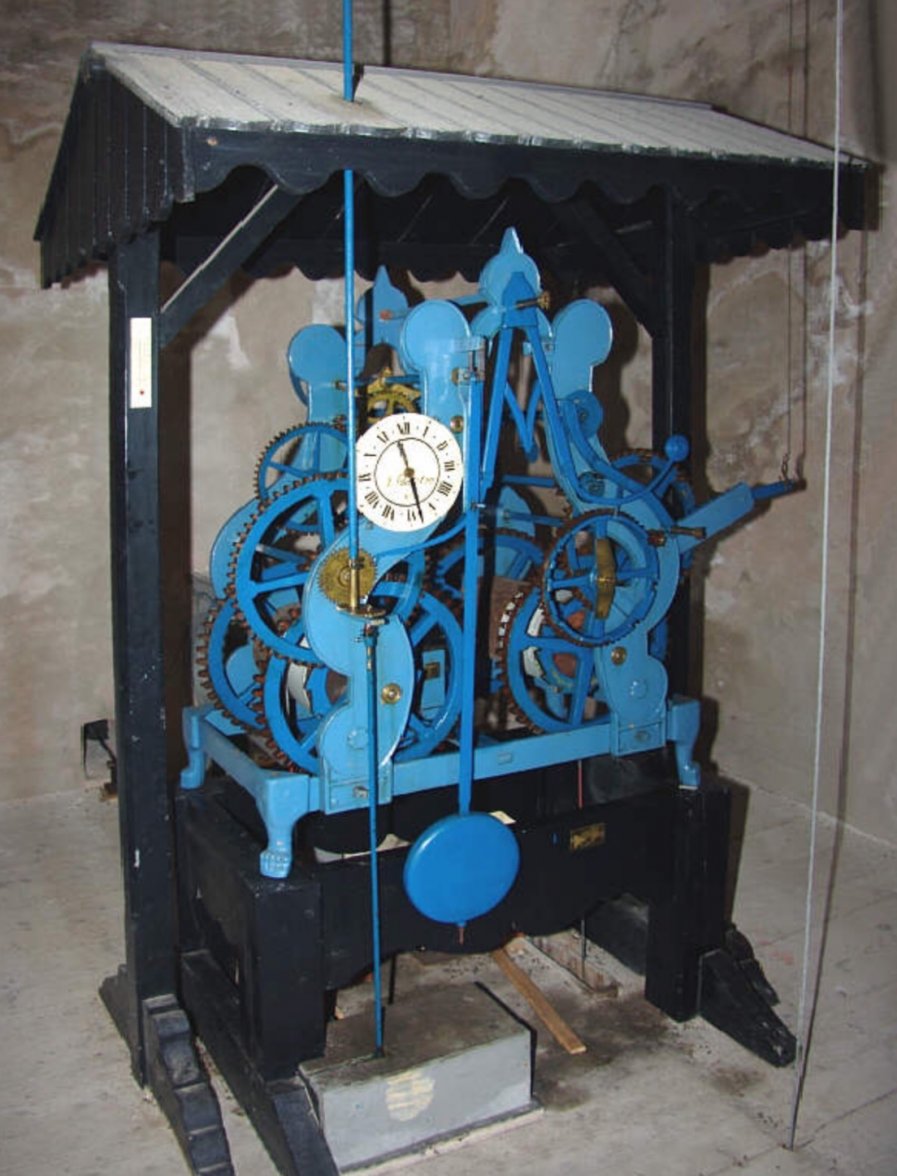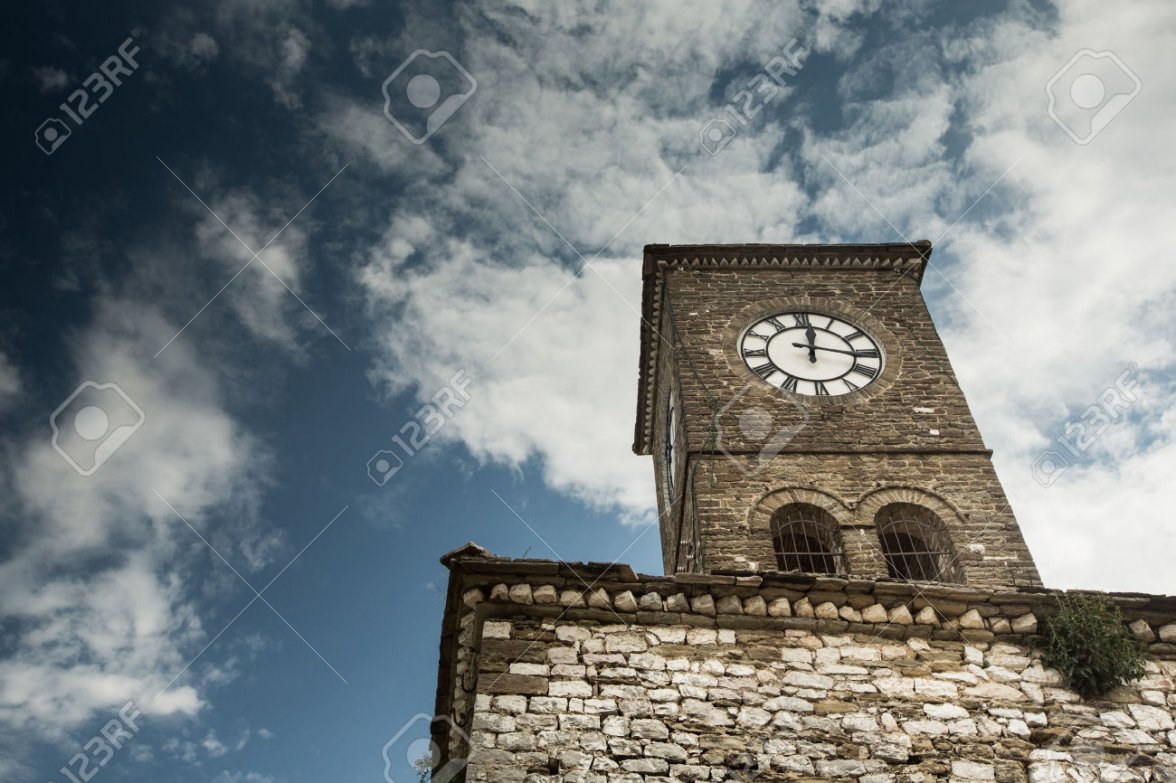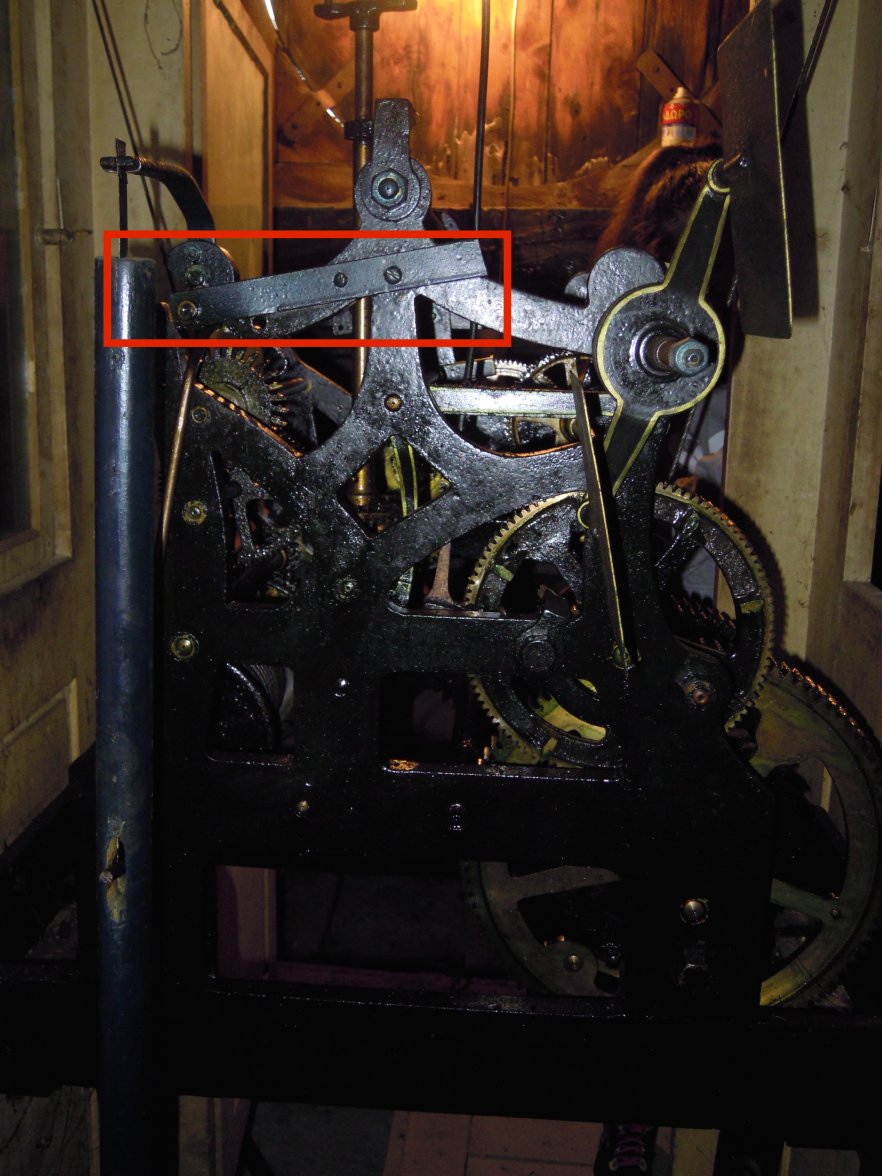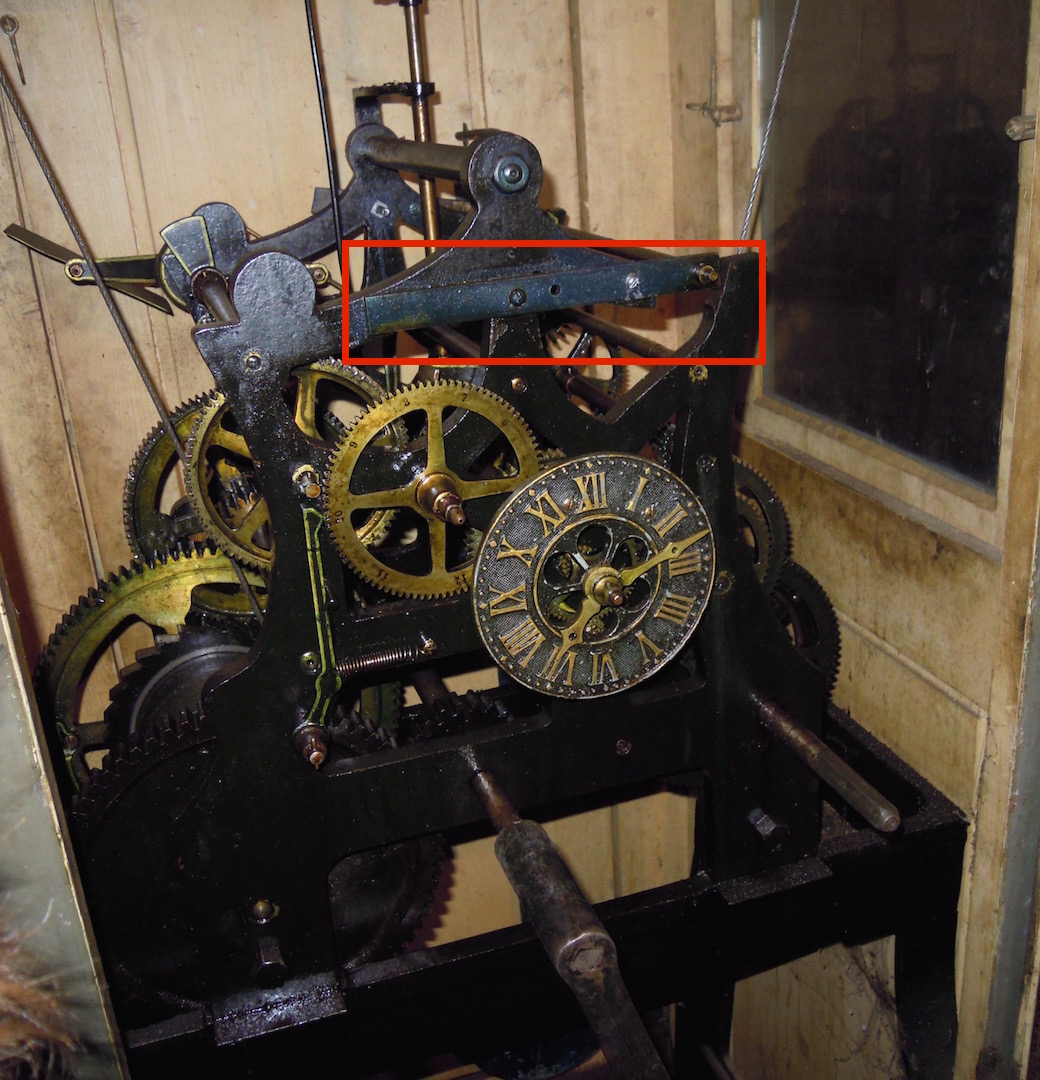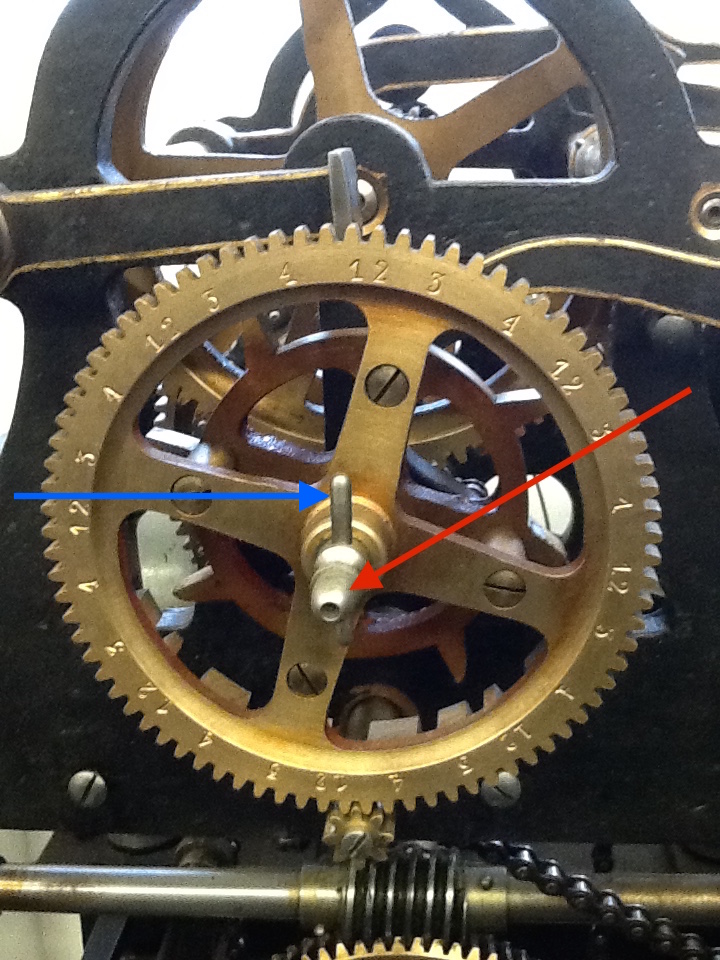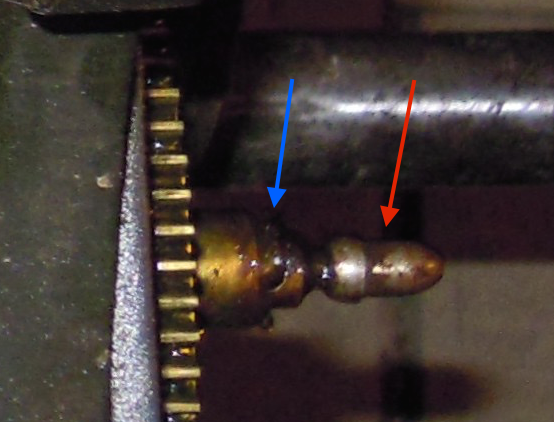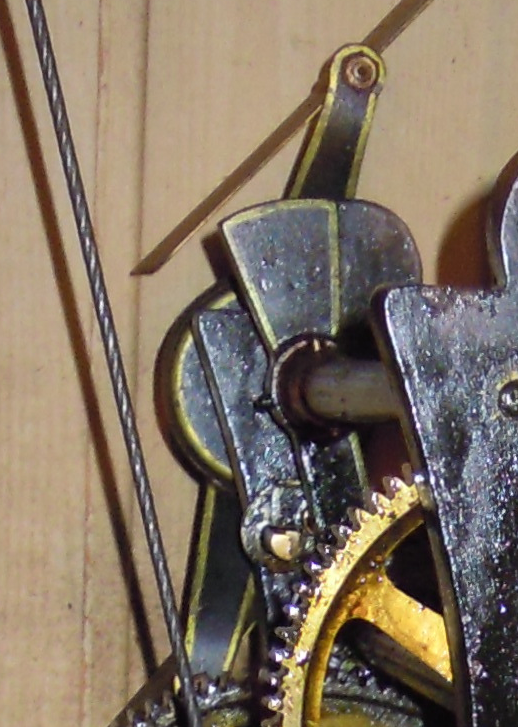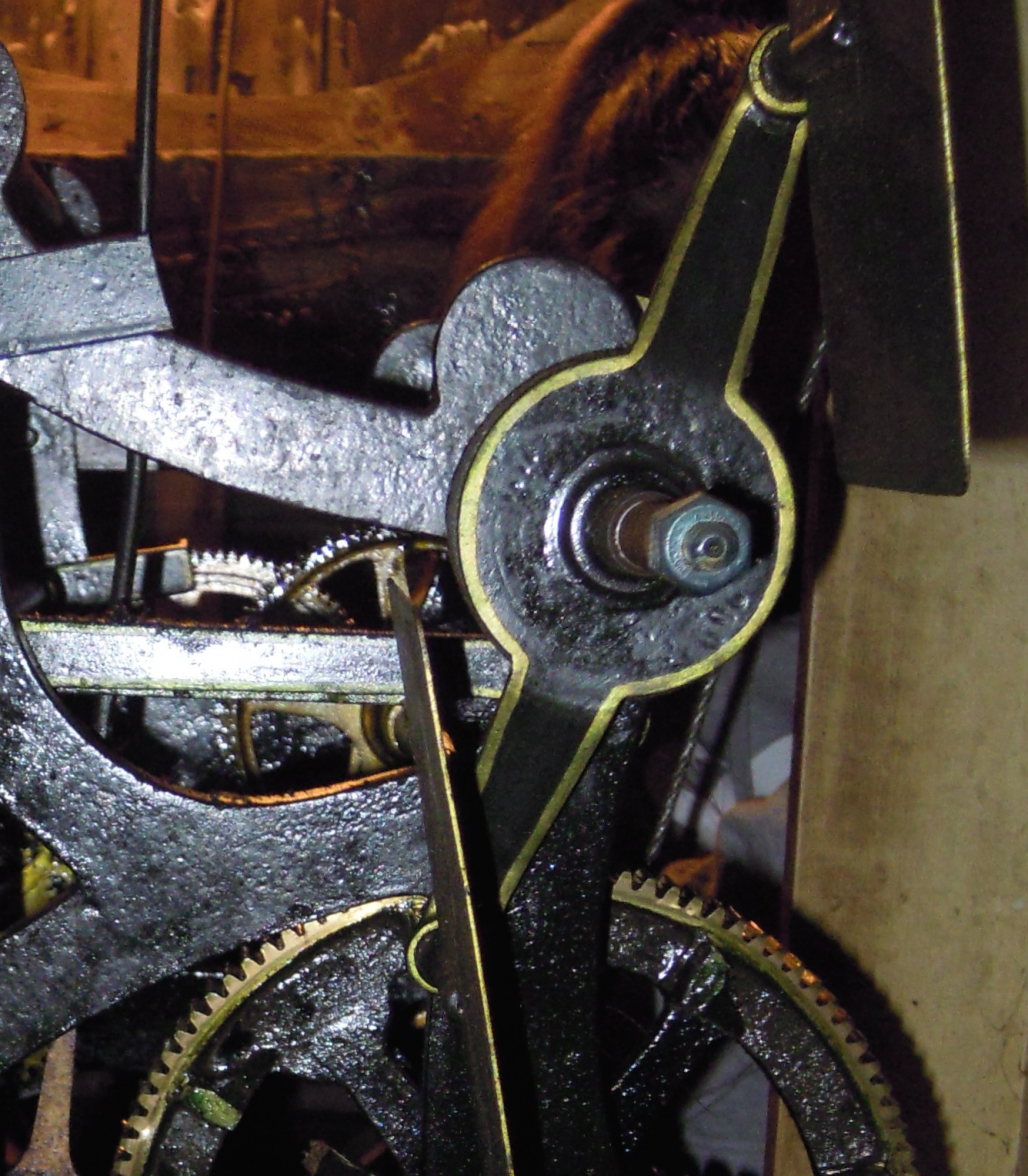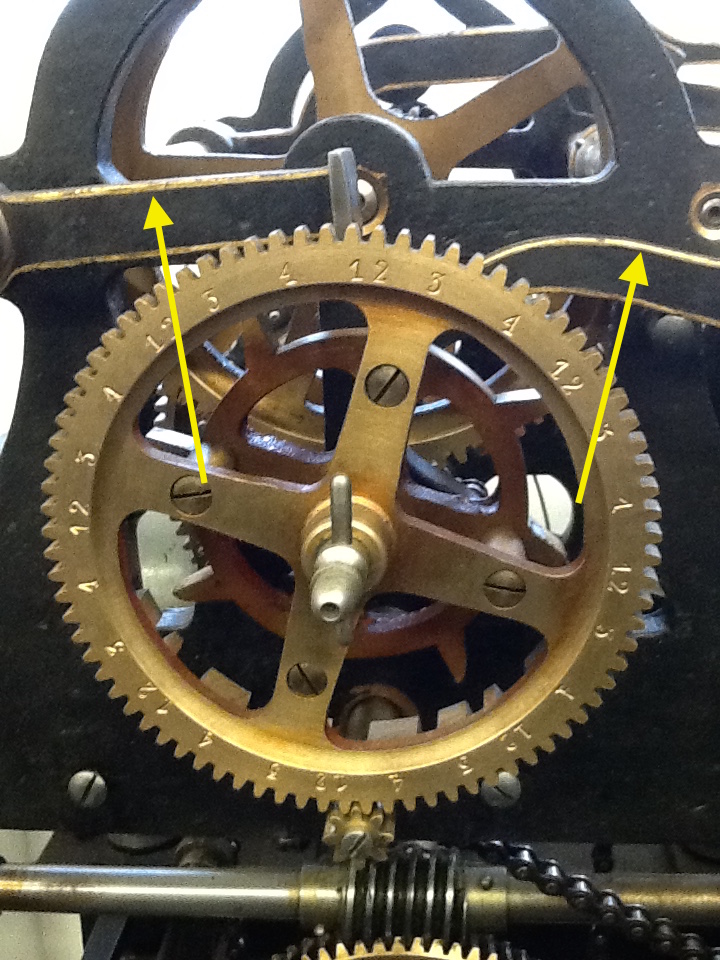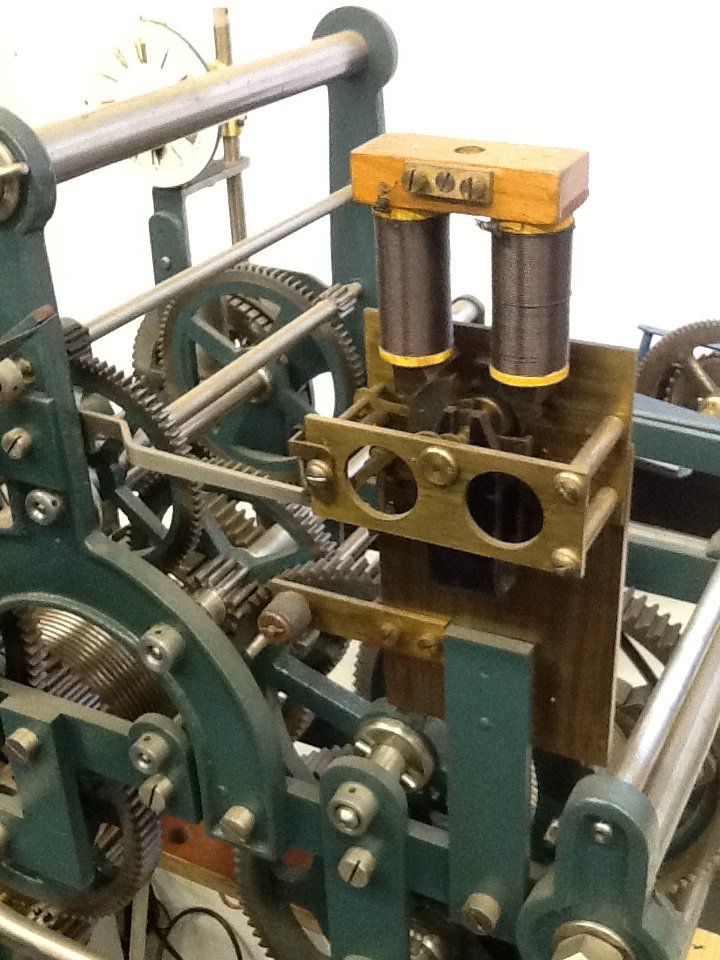dialstatic
·Given that you're already zero-ing in on the clock maker, this information is somewhat superfluous now ("mustard after dinner", as we say in Dutch), but here goes.
I spent an interesting few hours on the website of the Dutch Tower Clock Conservation Society (http://www.torenuurwerk.nl/) who keep a surprisingly comprehensive database of tower clocks in the Netherlands, in attempt to check the possibility you mentioned earlier that it might be Dutch. The clocks in the database can be sorted by location, period etc., and almost all have good pictures of the actual mechanisms.
Just to remind you, I know literally nothing about tower clocks. Nevertheless, I examined close to 500 tower clock mechanisms from the 20th (and, to be sure, also the 19th and 18th) century - the image of 'your' clock on one monitor and the database pictures on another for comparison - and came to a few conclusions.
1. There's a lot of people that care deeply about tower clocks.
2. 19th century tower clocks are by far the prettiest ones - often elaborately ornated and curvy, in sharp contrast to the boxy and relatively simple designs of the 18th century. 20th century tower clocks are obviously more complex than the 18th century ones, but very functional in appeareace and nowhere near as pretty as their 19th century counterparts (see images below).
3. Most of the clocks were made by Dutch clock makers, but there are imported ones as well.
4. I found the variety of designs and brands frankly staggering. There are a few well-known brands (e.g. Eijsbouts) with popular and recurring models, but I'd say at least half of the ones I saw (...and that's a conservative estimate) appeared to be unique pieces.
5. In spite of this great diversity, I found not one clock that even remotely resembled the one you're interested in. Well, maybe very remotely since they all operate in generally the same fashion, but not one time did I think 'hey, there may be a link here'. I kept an eye open especially for the secondary, time-setting dial and found zero instances that looked even remotely like yours.
Now I realise it's difficult to prove a negative, but given that the database is fairly comprehensive, I would say the odds of yours being a Dutch clock are low.
I spent an interesting few hours on the website of the Dutch Tower Clock Conservation Society (http://www.torenuurwerk.nl/) who keep a surprisingly comprehensive database of tower clocks in the Netherlands, in attempt to check the possibility you mentioned earlier that it might be Dutch. The clocks in the database can be sorted by location, period etc., and almost all have good pictures of the actual mechanisms.
Just to remind you, I know literally nothing about tower clocks. Nevertheless, I examined close to 500 tower clock mechanisms from the 20th (and, to be sure, also the 19th and 18th) century - the image of 'your' clock on one monitor and the database pictures on another for comparison - and came to a few conclusions.
1. There's a lot of people that care deeply about tower clocks.
2. 19th century tower clocks are by far the prettiest ones - often elaborately ornated and curvy, in sharp contrast to the boxy and relatively simple designs of the 18th century. 20th century tower clocks are obviously more complex than the 18th century ones, but very functional in appeareace and nowhere near as pretty as their 19th century counterparts (see images below).
3. Most of the clocks were made by Dutch clock makers, but there are imported ones as well.
4. I found the variety of designs and brands frankly staggering. There are a few well-known brands (e.g. Eijsbouts) with popular and recurring models, but I'd say at least half of the ones I saw (...and that's a conservative estimate) appeared to be unique pieces.
5. In spite of this great diversity, I found not one clock that even remotely resembled the one you're interested in. Well, maybe very remotely since they all operate in generally the same fashion, but not one time did I think 'hey, there may be a link here'. I kept an eye open especially for the secondary, time-setting dial and found zero instances that looked even remotely like yours.
Now I realise it's difficult to prove a negative, but given that the database is fairly comprehensive, I would say the odds of yours being a Dutch clock are low.
Edited:
